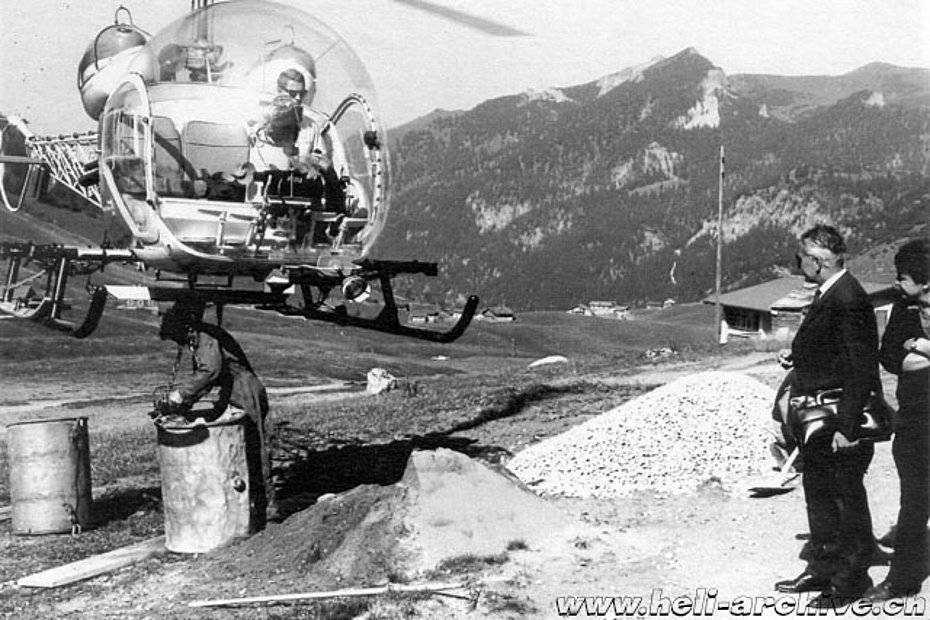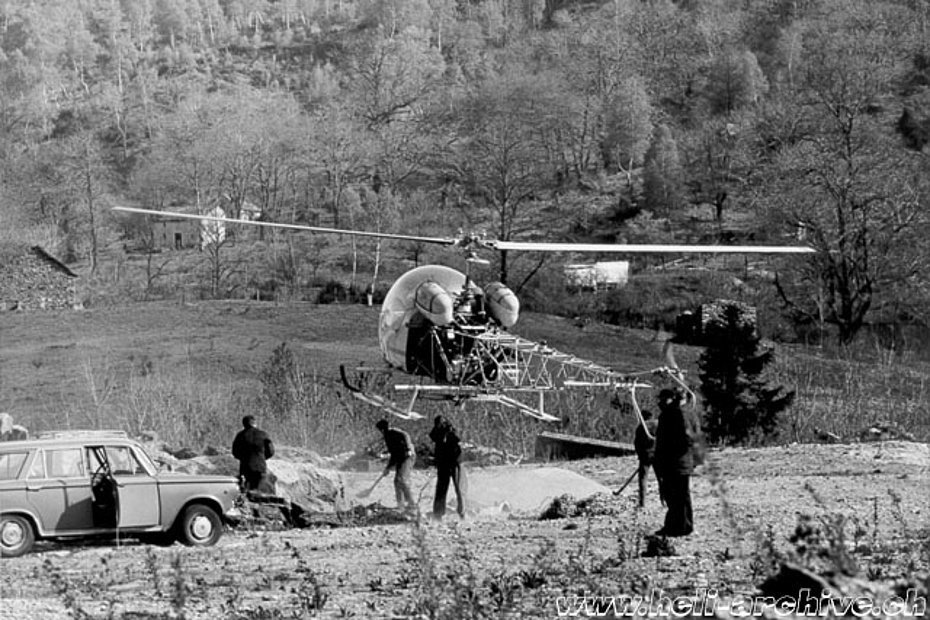
Before the introduction of the aluminium buckets, the transportation of sand and gravel used to produce concrete was made as follows: a net was layed out on the ground and was covered with a plastic or a coarse cloth (image 1).
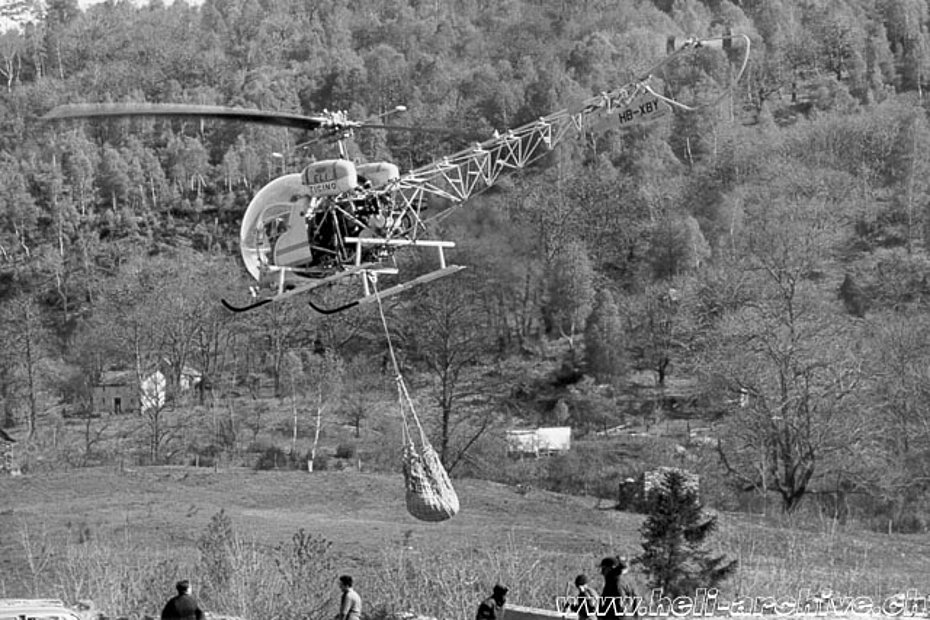
Then the ground crew poured the gravel in the middle of the net which was then hooked to the cargo sling and transported to destination (image 2). Another method was to pour it in bags which were then placed in the net. Both methods required time and the presence of several workers.
However this method was later abandoned.
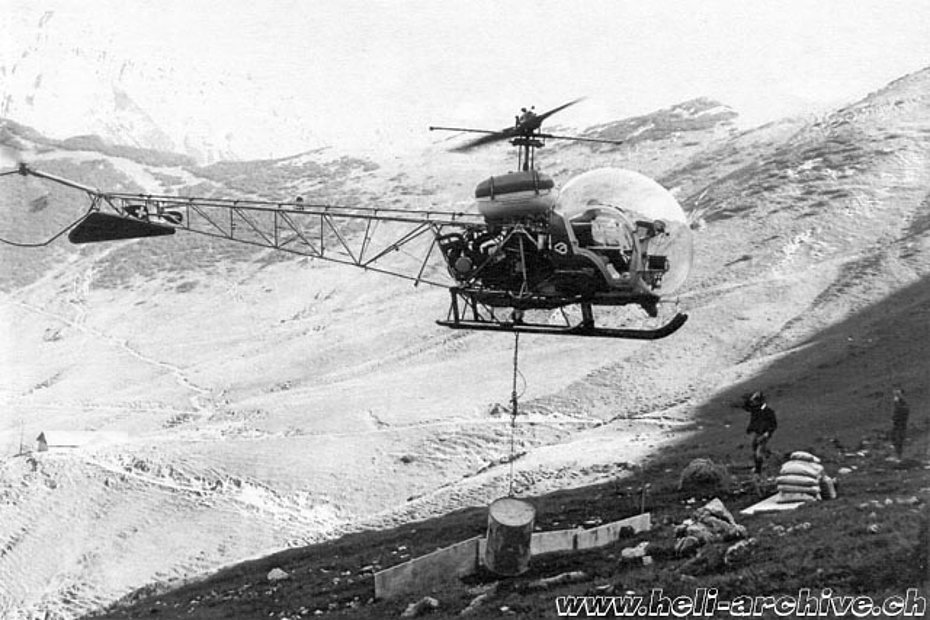
Despite the fact that it represented a step forward this system had some inconveniences. It was, for example, impossible to control the quantity of concrete poured. The pouring manoeuvre could cause some problems for the control of the helicopter, with also risks for the ground crew. This bucket was also experimentally used to drop water in the first test of aerial fire fighting. However this method was soon abandoned probably because the use of the helicopter was too expensive. Consequently the use of helicopters was limited to the transportation of firemen and their equipment. Nevertheless Air Zermatt still uses a similar bucket for fire-fighting operations.
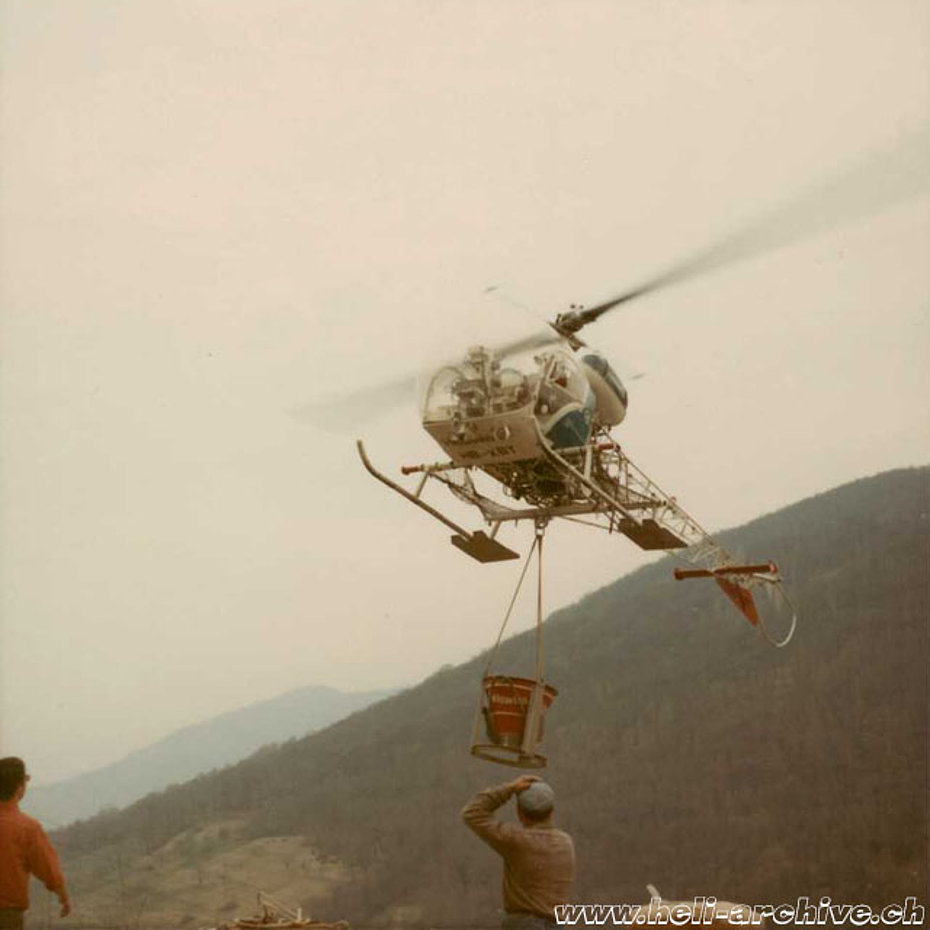
This first bucket model was soon replaced with a more practical one, similar to those used in construction sites. The main difference consisted in the control device which could be activated by the ground crew. The volume of concrete poured could also be controlled (image 5).
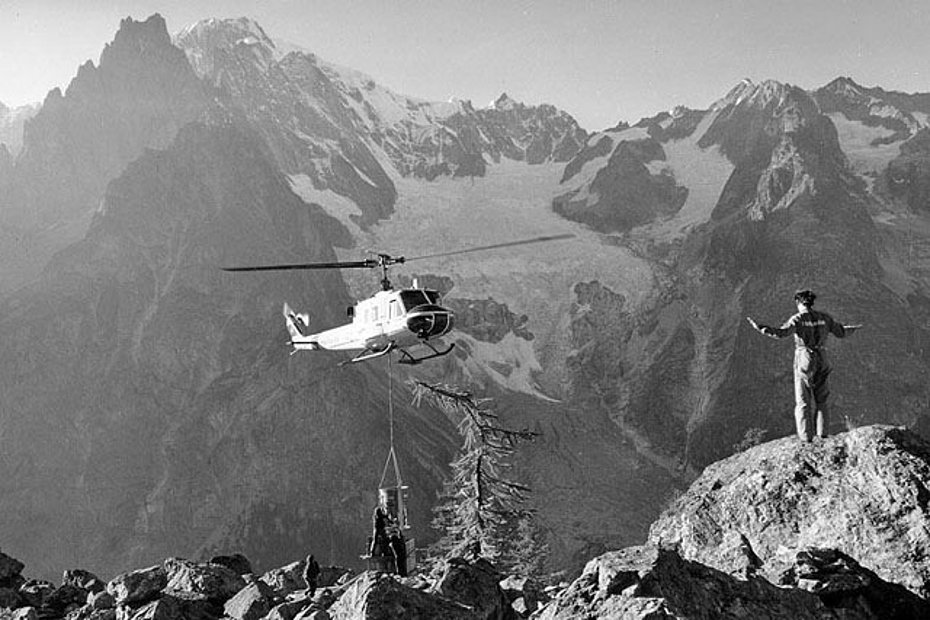
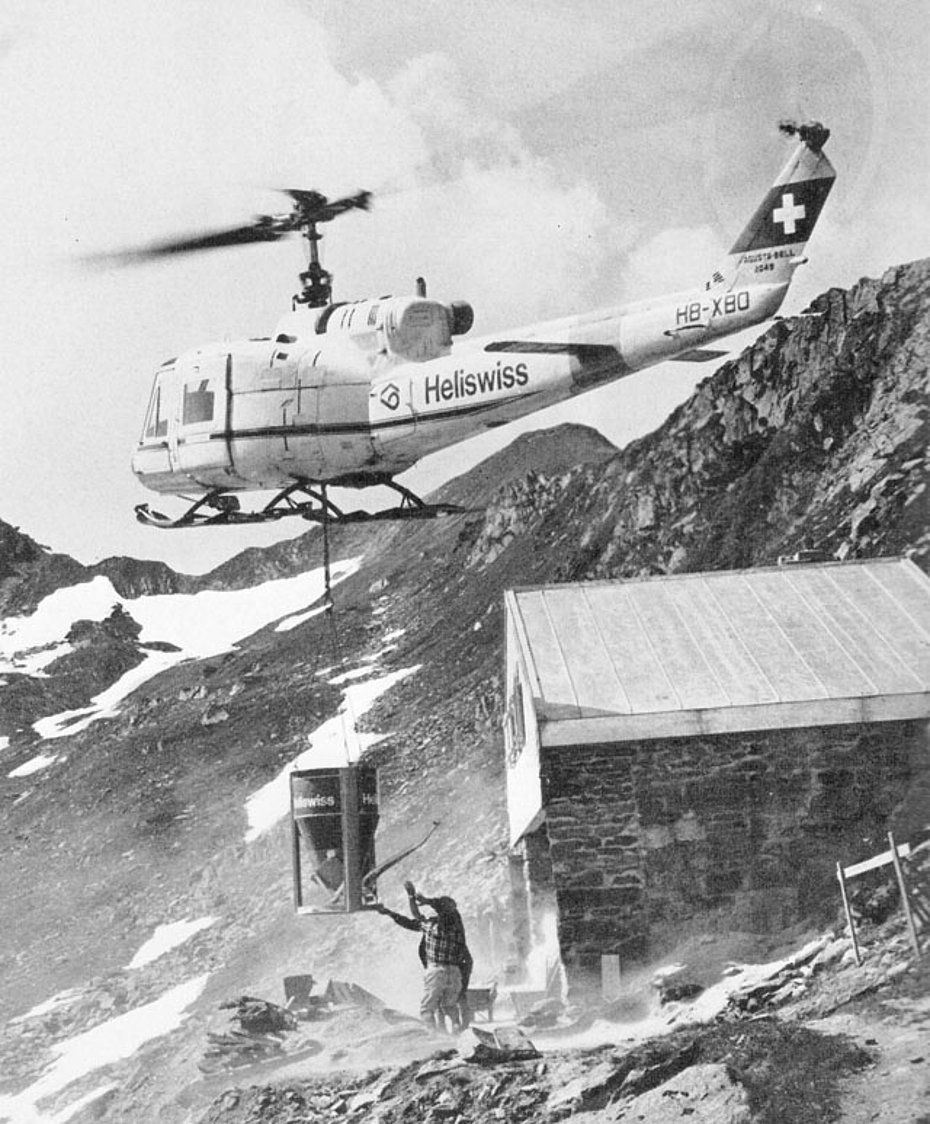
This new bucket was made of aluminium and had a capacity of about 150-200 litres for the Bell 47G3B-1 or 800 litres for the Agusta-Bell 204B.


